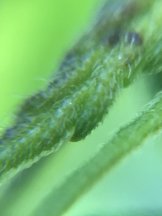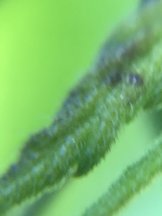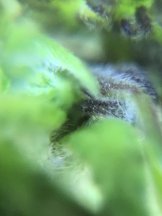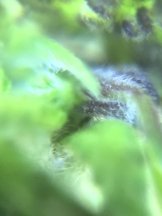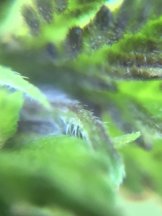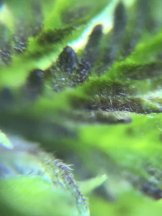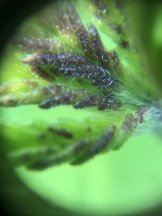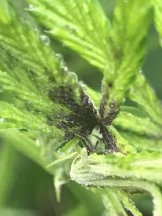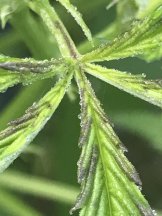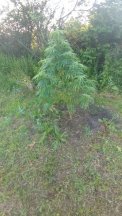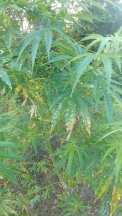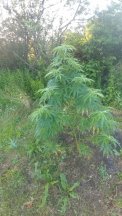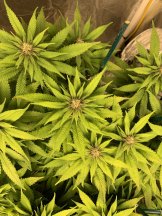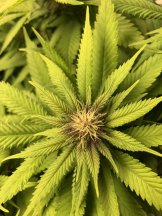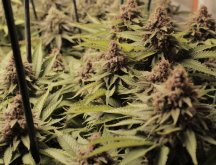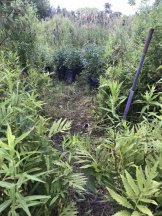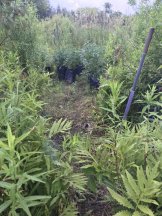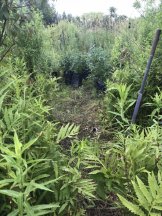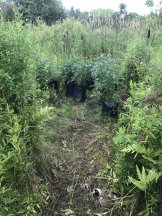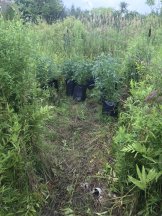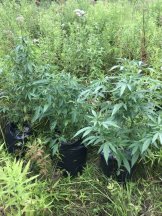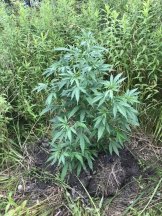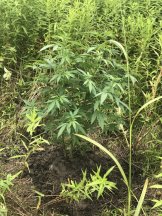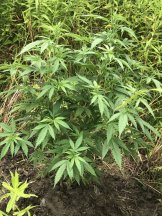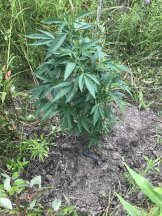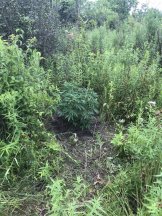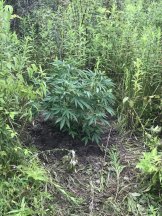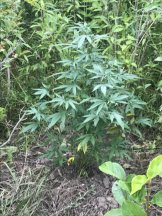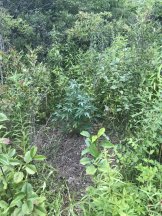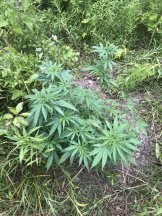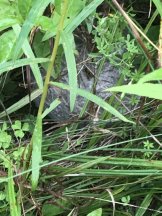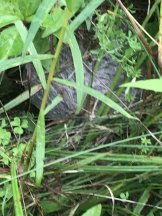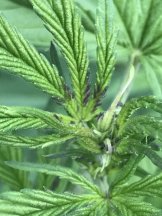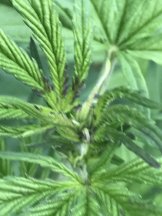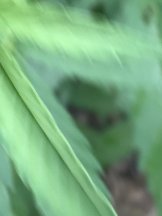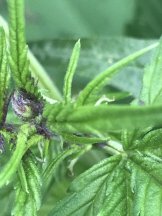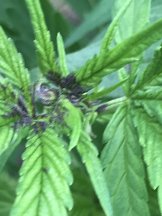The close-ups do not seem to show a pathogen growing on the leaves, but discoloration within the plant tissue itself. Considering the possibilities:
- Pathogen - while the dark colors express in a seemingly asymmetrical fashion (indicative of pathogen colonization), the scope pics show no external growth "on-top" of the plant tissue.
- Immobile nutrient deficiency - Immobile nutrients (trace minerals) express deficiencies on new growth since the plant cannot mobilize the nutrient from somewhere else (hence immobile) like it can with Nitrogen (think yellowing lower leaves). Looking at the full plant pics, there does not seem to be any nutrient issues anywhere else on the plant (looks healthy). It would be peculiar (but not impossible) for you to experience such a specific deficiency without any accompanying problem.
- Cold temps - The purpling associated with colder temperatures can express in the asymmetrical appearance of purpling.
Given that there appears to be no pathogen growing on the leaves, the lack of any accompanying nutrient issue, and the fact you've had temps dip into the 50s, it seems you may just have some purple from the lower temperature. If you really wanted to test out each of the 3 possibilities listed above, you could segregate your plants and treat each one assuming each issue. Ex.- one plant gets sprayed for pathogens, another gets treated as if nutrient issue, and another gets covered at night.
